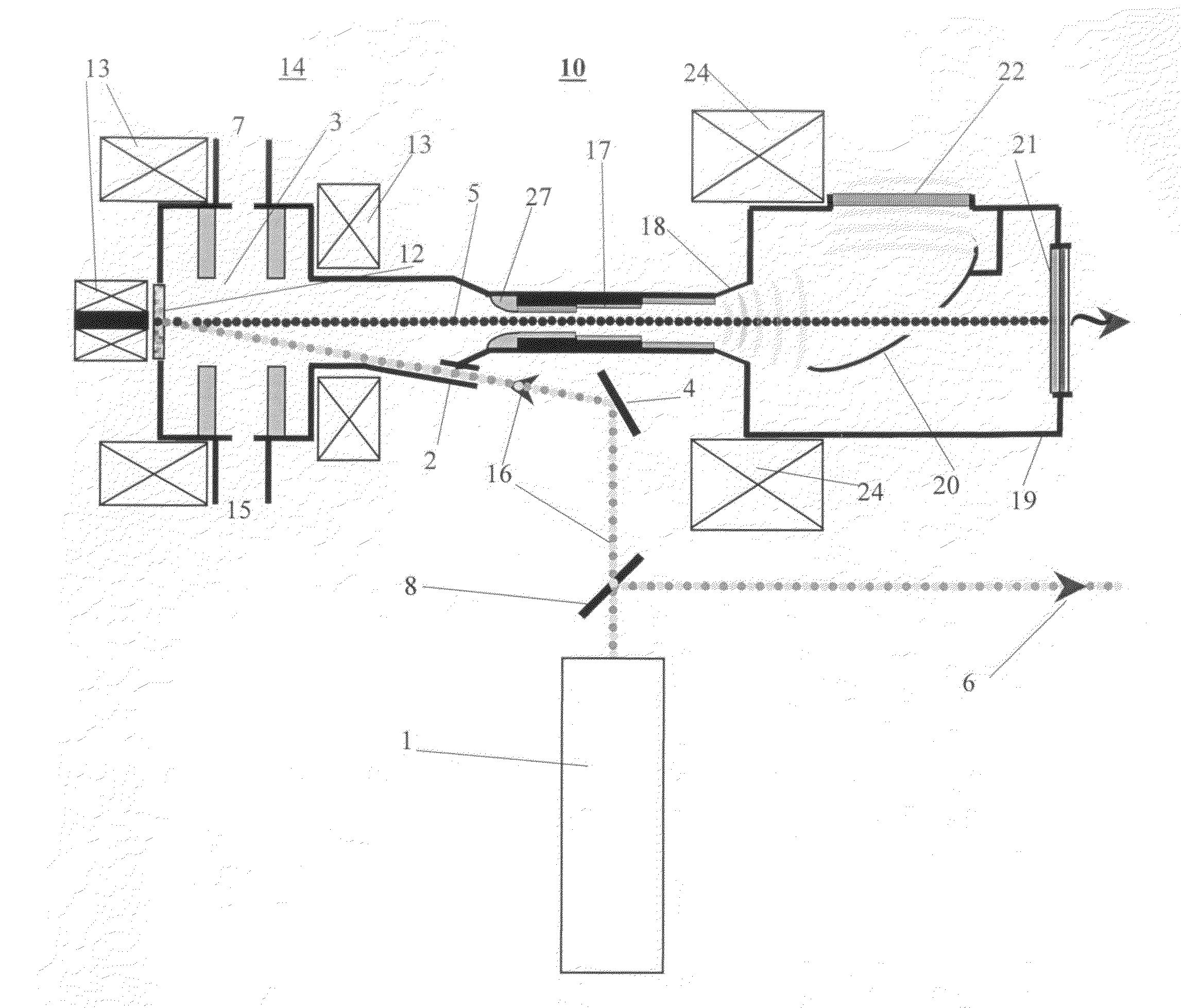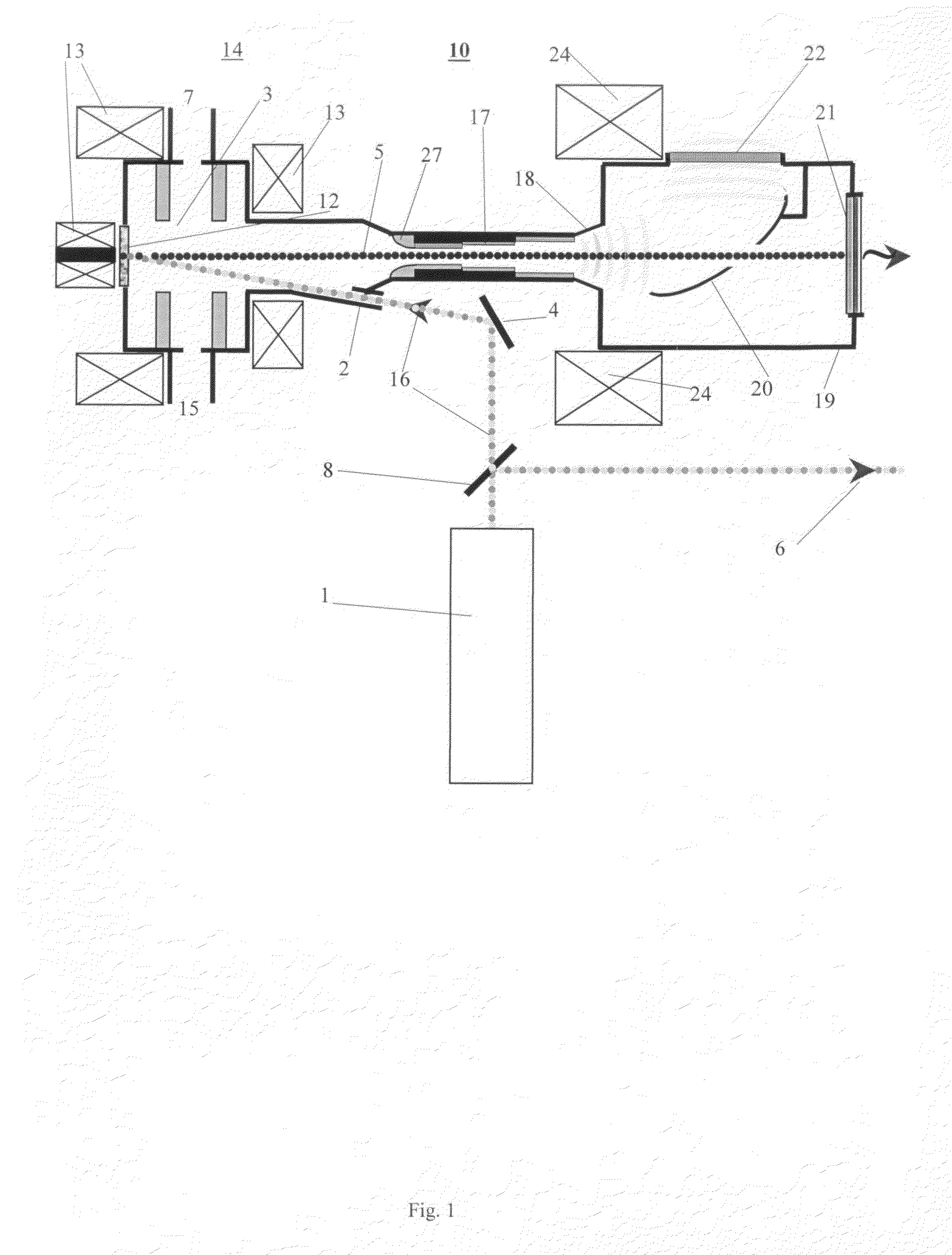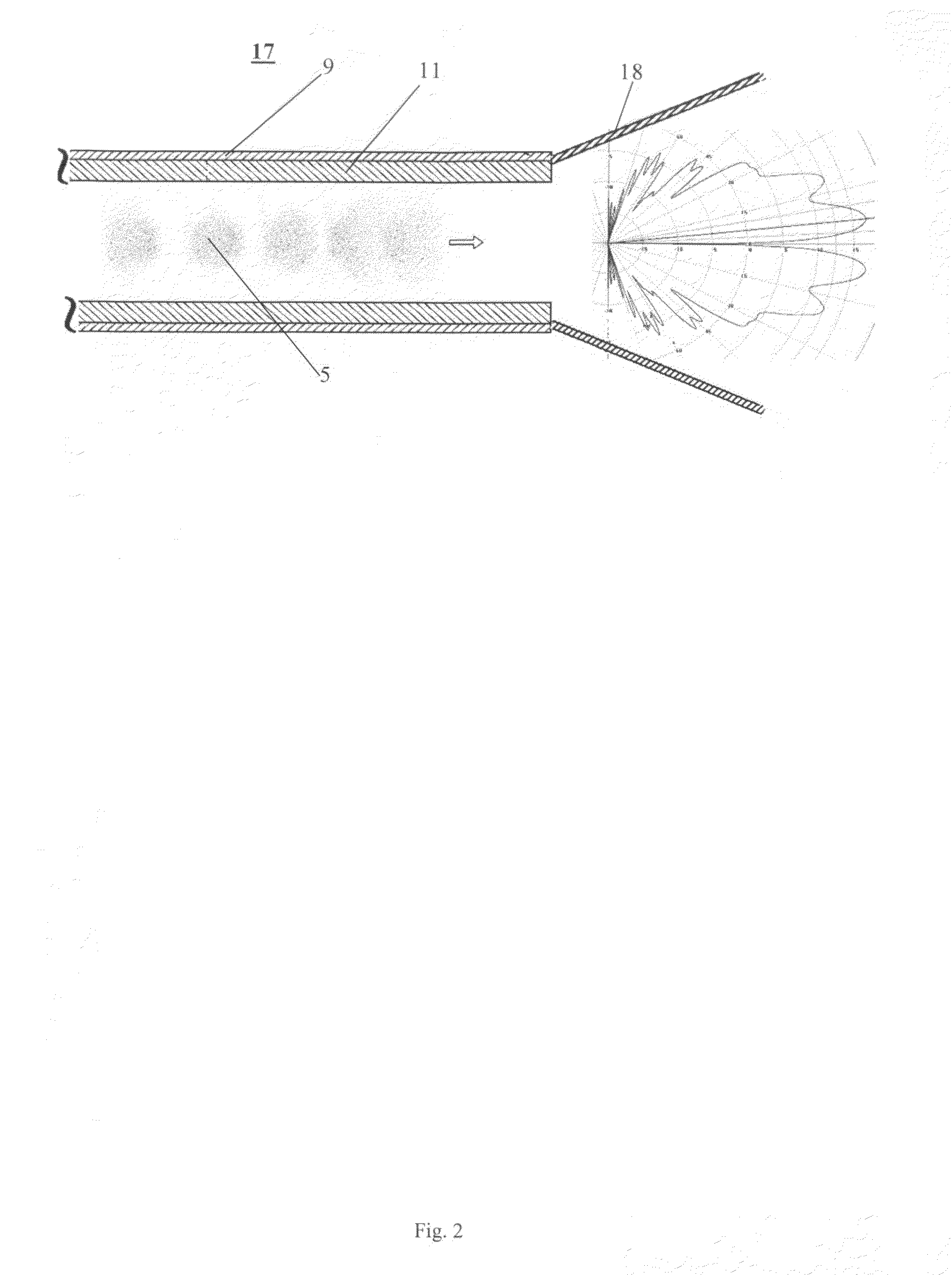Compact, short-pulse X-ray and T-ray fused source
a terahertz source, short-pulse technology, applied in the direction of x-ray tubes, irradiation devices, nuclear engineering, etc., can solve the problems of not revealing the operation of short-pulse gamma-ray pulses, compact or small terahertz sources available today, and deliver very low maximum power not exceeding several watts, and achieve high peak current, low emittance, and beam quality high
- Summary
- Abstract
- Description
- Claims
- Application Information
AI Technical Summary
Benefits of technology
Problems solved by technology
Method used
Image
Examples
third embodiment
[0035]A third embodiment is illustrated in FIG. 4 and comprises a switchable magnet or deflector 23 that distributes different pulses of the electron beam over different beamlines: one for the terahertz extractor and one for the X-ray converter. In this embodiment the terahertz radiation and X-rays are generated from different electrons. Since different radiators use different pulses they do not interfere with each other, allowing optimization of the performance of these two radiators independently. The beam size and shape are controlled individually for each beamline (in extractor 17 and on the target 21) with quadrupole magnets 25 (e.g., triplets) to enable a small spot on the target or inside the channel. Non-circular beams can also be generated if needed. The magnetic system provides beam divergence and deposition on the wall of the beam collector 19. The system 24 can comprise, for example, a doublet of quadrupoles or a single dipole (bending) magnet to separate the electron an...
fourth embodiment
[0036]In a fourth embodiment, the source 30 is utilized as a short-pulse X-ray source for portal inspection system based on a photoinjector as described above, in the absence of the THz radiator-extractor and associated hardware. Detection of heavy material such as lead, uranium, plutonium and other nuclear substances is performed with the short pulse source 30 as shown in FIG. 5. Source 30 is mounted on the sidewall of portal 40. A container 31 is moved along the portal 40 with a known velocity while its horizontal position, weight, velocity and other characteristics are controlled with sensors 34 and 36. The source comprises pulse RF photoinjector 14 and thin foil high-Z target 21 as described above and shown in FIGS. 1, 3, 4 and delivers short picoseconds bursts of gamma radiation propagating towards container 31. Container 31 may contain high-Z object 39 that absorbs gamma-rays. The 2D array of detectors 33 sensitive to picoseconds X- and gamma rays form a set of electrical sign...
PUM
 Login to View More
Login to View More Abstract
Description
Claims
Application Information
 Login to View More
Login to View More - R&D
- Intellectual Property
- Life Sciences
- Materials
- Tech Scout
- Unparalleled Data Quality
- Higher Quality Content
- 60% Fewer Hallucinations
Browse by: Latest US Patents, China's latest patents, Technical Efficacy Thesaurus, Application Domain, Technology Topic, Popular Technical Reports.
© 2025 PatSnap. All rights reserved.Legal|Privacy policy|Modern Slavery Act Transparency Statement|Sitemap|About US| Contact US: help@patsnap.com



